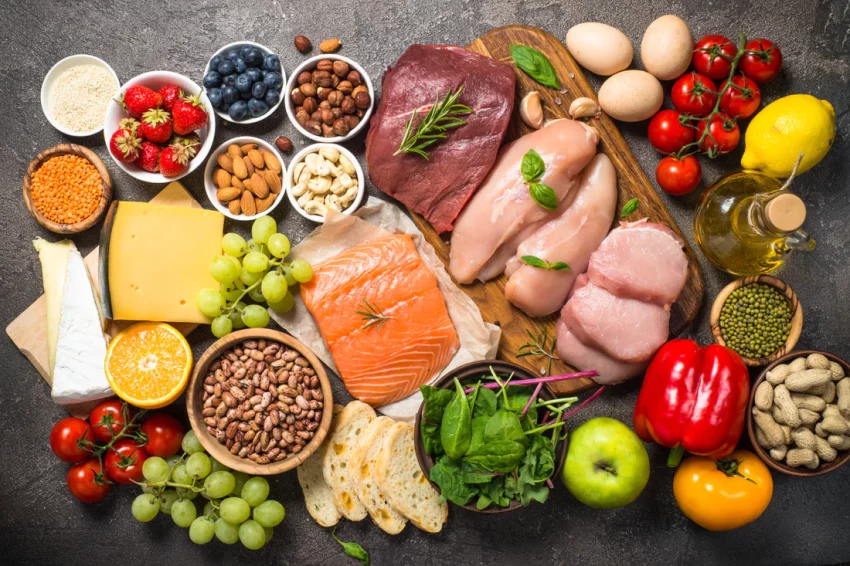In recent years, the ketogenic diet has gained popularity among individuals looking to shed pounds quickly. The process of ketosis, where the body uses fat as its primary fuel source, has made the keto diet an attractive option for weight loss. However, it’s essential to understand how to maintain your weight loss after following the keto diet. Here are some effective strategies to help you achieve that goal:
Understanding Ketosis:
Ketosis is a metabolic state in which the body burns fat for energy. By severely limiting carbohydrate intake, the body is forced to shift from using glucose (derived from carbohydrates) to burning fat. The traditional keto diet consists of 90% fat, 6% protein, and 4% carbohydrates.
Symptoms of Ketosis:
You can determine if your body is in a state of ketosis by using at-home test strips. However, there are also other signs and symptoms of ketosis, which can sometimes be unpleasant. These include rapid weight loss, loss of appetite, bad breath (keto breath), and the “keto flu,” characterized by symptoms such as headache, brain fog, nausea, mood swings, and fatigue.
Safety Considerations:
While the keto diet is generally safe for most individuals, there are potential health risks associated with it. Some of these risks include dehydration, nutrient deficiencies, constipation, increased cholesterol levels, kidney stones, loss of bone density, and mood swings. It is important to avoid the keto diet if you have a history of eating disorders or if you have health conditions affecting the thyroid, pancreas, liver, or gallbladder. Pregnant individuals and children should also refrain from following a restrictive diet like keto unless under the supervision of a healthcare professional.
Indications to Stop Keto:
Although many individuals turn to low-carb diets like keto for weight loss, it is not sustainable in the long term. If the symptoms of keto flu or ketosis become too severe and start interfering with your daily activities, it may be time to discontinue the diet. Warning signs to watch for include nausea or vomiting, frequent headaches, fatigue, diarrhea or constipation, and weight loss plateaus.
Preventing Weight Regain:
Unfortunately, stopping the keto diet often leads to weight regain as individuals revert to their previous dietary patterns. However, there are strategies you can implement to avoid gaining weight after transitioning off keto. Here are eight tips to help you maintain your weight loss:
Monitor and Adjust: Pay close attention to your body’s response when transitioning to a new eating plan. If you notice weight gain, make necessary adjustments by reducing carbohydrate intake.
Embrace Healthy Cooking: Focus on preparing and enjoying nutrient-dense, minimally processed foods. Learning to cook and appreciate high-quality ingredients will support long-term weight management.
Gradually Reduce Fat Intake: Since a significant portion of calories on the keto diet comes from fat, slowly decrease your fat consumption while increasing lean proteins, vegetables, and wholesome carbohydrates like fruits, whole grains, and beans.
Gradually Reintroduce Carbs: When adding carbohydrates back into your diet, do so gradually. Start by adding small amounts of high-fiber carbs and adjust based on your body’s response. Find the right balance that allows you to maintain your weight loss.
Transition to the Mediterranean Diet: Consider shifting to a diet that resembles the Mediterranean diet. Gradually incorporate high-fiber carbs into your meals and follow the principles of a well-rounded, balanced diet.
Avoid Previous Unhealthy Habits: Be mindful not to revert to old, unhealthy eating habits. Selectively choose your foods, particularly carbohydrates, and avoid processed foods, sugary snacks, and beverages that contribute to weight gain.
Opt for Whole Foods: Prioritize the consumption of whole, unprocessed foods over highly processed options. Choose lean meats, fish, poultry, plant-based proteins, and incorporate plenty of vegetables into your meals.
Increase Physical Activity: Regular exercise plays a vital role in weight maintenance. Consult with your healthcare provider to identify suitable exercise routines that align with your health and fitness goals.
Foods to Add and Avoid:
When transitioning off the keto diet, gradually introduce whole fruits, vegetables, whole grains, beans, legumes, lean proteins, and low-fat dairy products. Simultaneously, limit or avoid highly processed foods, alcoholic beverages, sugary drinks, desserts, baked goods, and candies.
In conclusion, while the keto diet can be effective for weight loss, it’s crucial to have a plan for maintaining weight loss after transitioning off the diet. By implementing these strategies and adopting a balanced approach to nutrition, you can increase the likelihood of long-term success. Remember to prioritize food quality and quantity, focus on healthy fats, and embrace sustainable eating habits for lifelong health and wellness.
